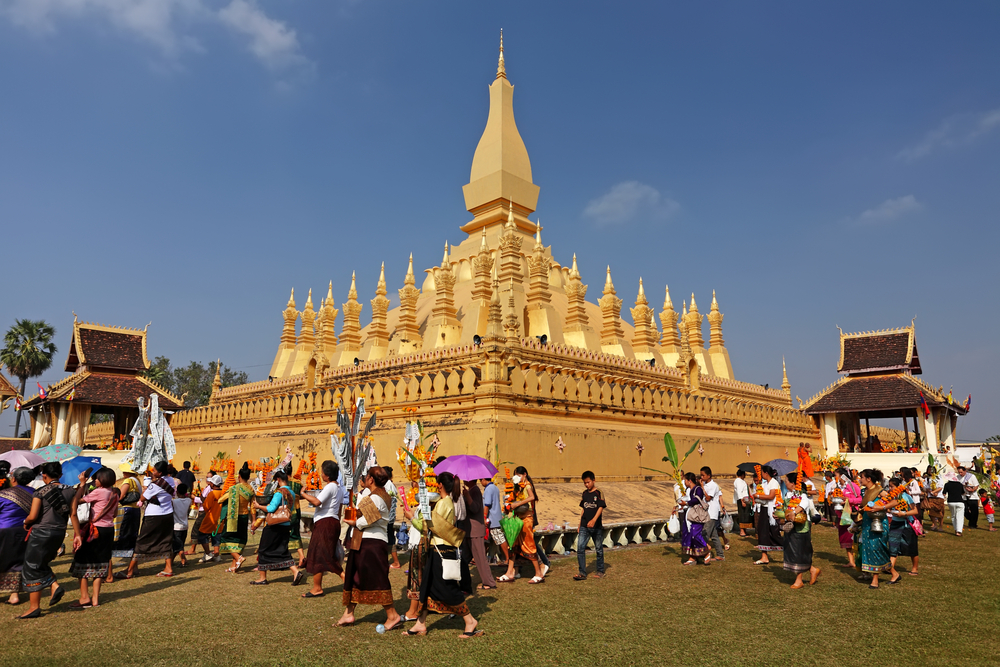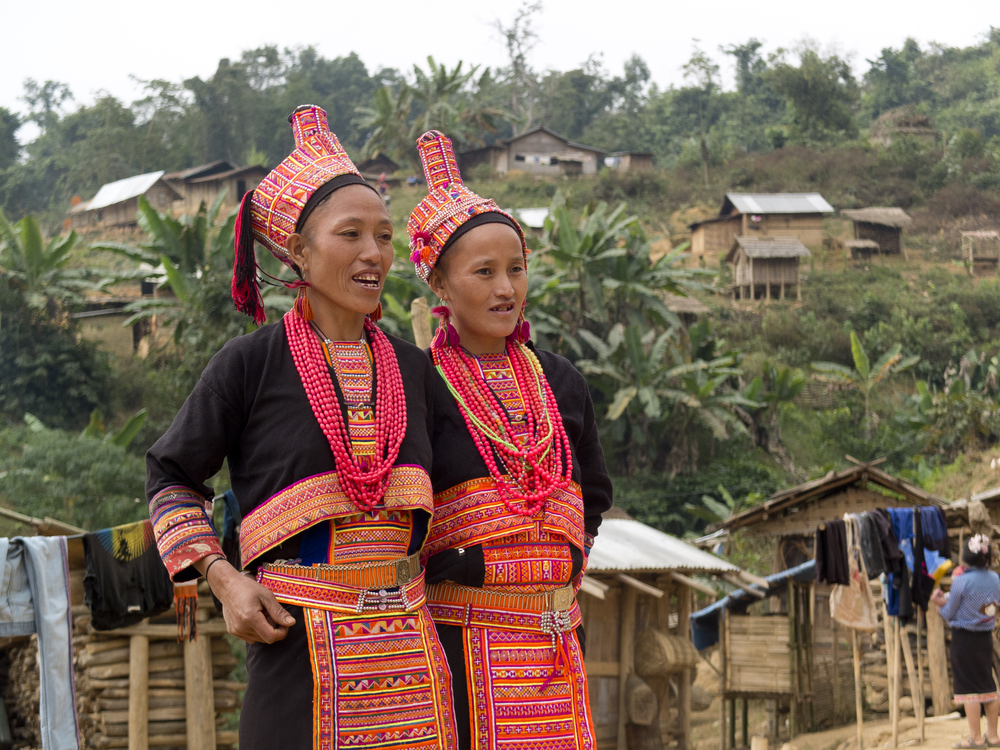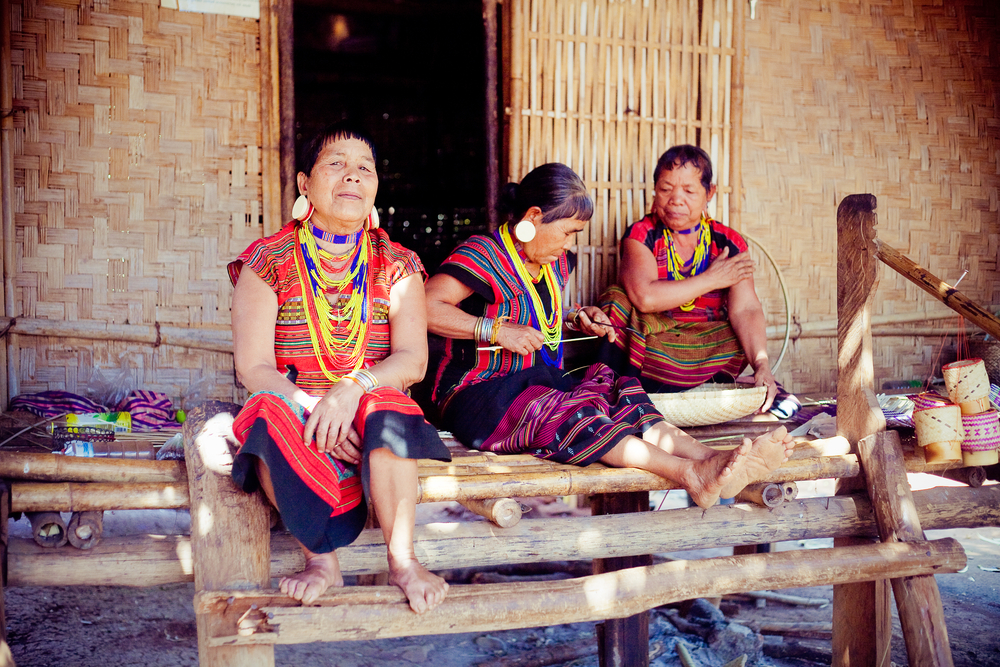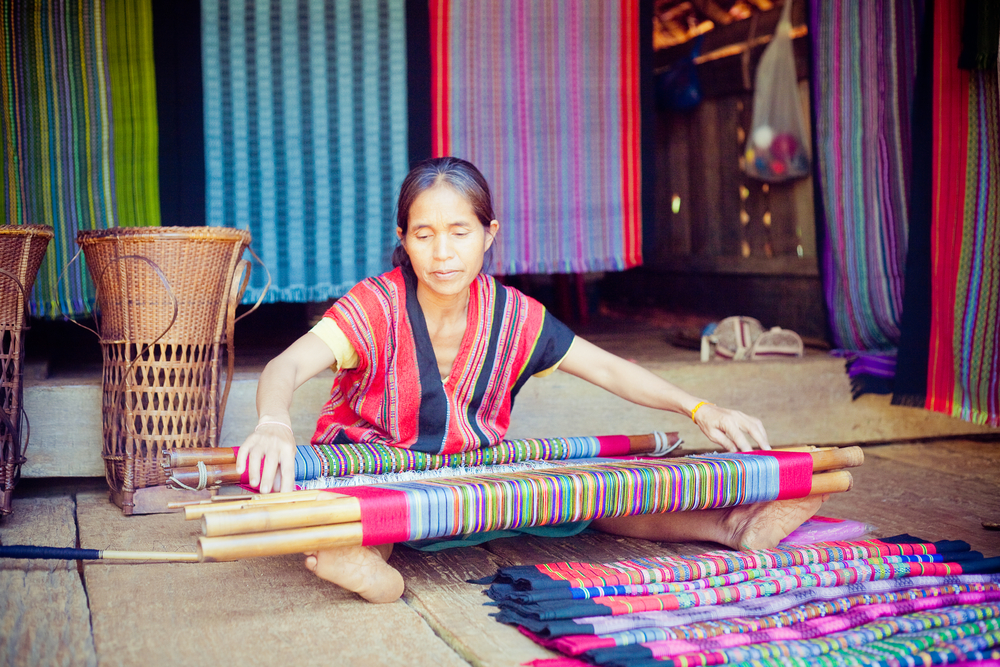Laos - ritual and festival
The long-preserved tradition of Heet Sib Song Kong Sib See is quite similar to one the Isan traditions in Thailand. Heet is a term for custom, and Sib Song or 12 means the twelve months of a year where one celebration takes place in each month. People in Luang Phrabang continue to cherish this tradition very largely. In addition to it, there are other traditional celebrations such as a House warming ceremony, BoonKongbuad Konghod tradition, a wedding ceremony, a ritual of Basi Sou Khuan, a tradition of giving an offering to ancestors’ spirits, Wan Kam or a giving birth tradition, Pid Pee tradition, Kuang tradition and Hag Na Kwan tradition. (ศูนย์อินโดจีนศึกษา วิทยาลัยการบริหารรัฐกิจ มหาวิทยาลัยบูรพา, 2551, น.37)
The Twelve-Month Tradition
The twelve-month tradition is a ritual or tradition in which people practice on separate occasions in each month. It is a shared characteristic of Buddhist culture found in Laos and the Northeast of Thailand signifying a strong relationship between people dwelling on both sides of the Mekong River before political reasons tore them apart. In general, this tradition is locally cherished. However, some local activities are either cancelled or practiced differently depending on the local favors and beliefs. These are some of the most favored and popular traditions seen widely practicing: Boon Phra Ves (in March), Boon Sang Kan or New Year festival (in April), Song Nam Phra or the act of sprinkling water on a Buddhist image (in April), Boon Kao Punsa or the Buddhist Lent (in July), Boon Kao Pradab Din or placing food in places for the wandering spirits (in August), Boon Kao Sak (in September), Boon Oak Punsa or the day marking the end of the Buddhist Lent (in October), Boon Lai Rue Fai or Illuminated Boat Procession (in October) and Boon Ka Tin and Boon Wai Phra That (in November). (ทรงคุณ จันทจร, 2551, น.65-66)
Songkran Festival
It is considered Laos’ New Year just like Thailand’s New Year. The first day of this festival is called Wan Sung Kan Long in which people in Luang Phrabang go out and shop for things including flags with Buddha image meant to decorate the sand pagodas along Mekong riverside. In the evening, the Loy Kratong Festival takes place as people begin to load things on the Kratong or banana leaf-made containers, praying that all the sufferings would go away with their Kratong. The second day is called Wan Nao where, in the morning, the puppet procession of the revered holy spirits makes its way as well as a procession of Songkran Lady. The third day is called Wan Sung Kan Keun. People cook steamed sticky rice and milk candies, and walk up the Phu Si hill, which is a high mountain standing in the midst of Luang Phrabang. The fourth day is another big day when Phra Bang procession takes place. Phra Bang or the Royal Buddha Image that protect the city is invited with great respect to be sprinkled by the town people once a year. After that, Phra Bang is temporarily enshrined at Wat Mai for 3 days and nights. (วิทย์ บัณฑิตกุล, 2555, น.154-155)
The Boat Race of Oak Punsa (the day marking the end of Buddhist Lent)
The Boat Race is a joyous celebration. Each temple sponsors a racing boat beautifully gilded which has 30-40 oarsmen rowing in harmony. The oarsmen rehearse rowing before the racing day as one old man controls the direction on the back. On the racing day, people are colorfully dressed to attend the race where the racing boats and the committees are stationed. The government officers and other attendees also take their boats there to watch the race. (ทรงคุณ จันทจร, 2551, น.67)
Buddhist Lent and Merit-Making at Temple
Lao people are mostly Buddhist, so they are often seen carrying out these rituals. During the Buddhist Lent and every Buddhist holy day, they offer food to the monks in the morning. While this kind of merit-making is also practiced during the Lent, what seems essential is that the practices related to candles. People offer the Lent candles and traditionally hold the Candle Festival. In addition, they give away food to the dead as well as to their living grandparents and parents. The elders keep the Buddhist precepts in a monastery while other people avoid committing sins and keep the Buddhist precepts. The Yee Peng Month or the full moon in the twelfth month sees the Loy Kratong Festival. Kratong or banana leaf-made containers are carried out of the temple and floated on Mekong River. All traditions are related to Buddhism; therefore, Buddhist rituals are largely practiced.
Making Merit with Steamed Sticky Rice Tradition
Luang Phrabang has been named ‘the Last Buddisht-Socialist City’ since Lao people have a strong bond with Buddhism. It is often seen that people in Luang Phrabang offer food to the monks every morning as hundreds of monks walk around the city. Some call this practice ‘making merit with steamed sticky rice” because people in Luang Phrabang offer only steamed sticky rice to the monks. This tradition is admired by the passersby witnessing a strong faith in Buddhism of the Luang Phrabang people. (ทรงคุณ จันทจร, 2551, น.68)
Bibliography
ทรงคุณ จันทจร. (2551). แขวงหลวงพระบาง สาธารณรัฐประชาธิปไตยประชาชนลาว: เศรษฐกิจ สังคม วัฒนธรรม.มหาสารคาม: สถาบันวิจัยศิลปะและวัฒนธรรมอีสาน มหาวิทยาลัยมหาสารคาม.
วิทย์ บัณฑิตกุล. (2555). สาธารณรัฐประชาธิปไตยประชาชนลาว. กรุงเทพฯ: สถาพรบุ๊คส์.
ศูนย์อินโดจีนศึกษา วิทยาลัยการบริหารรัฐกิจ มหาวิทยาลัยบูรพา. (2551). ข้อมูลพื้นฐานสาธารณรัฐประชาธิปไตยประชาชนลาว. ชลบุรี: ศูนย์อินโดจีนศึกษา วิทยาลัยการบริหารรัฐกิจ มหาวิทยาลัยบูรพา.





